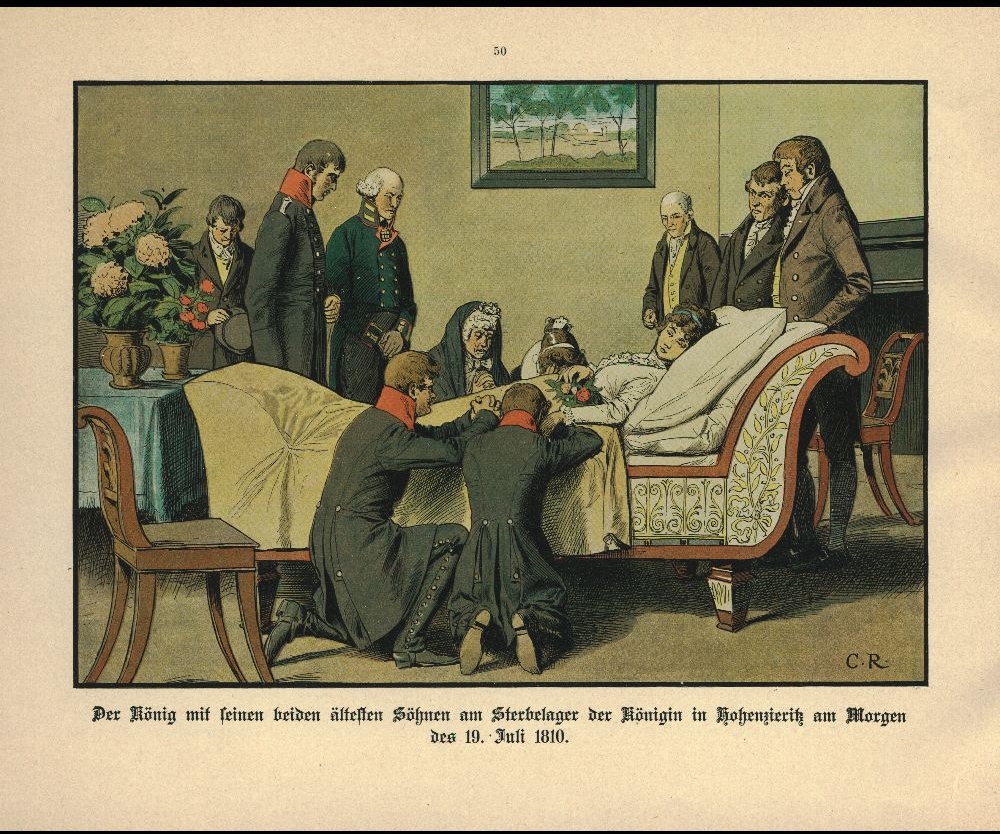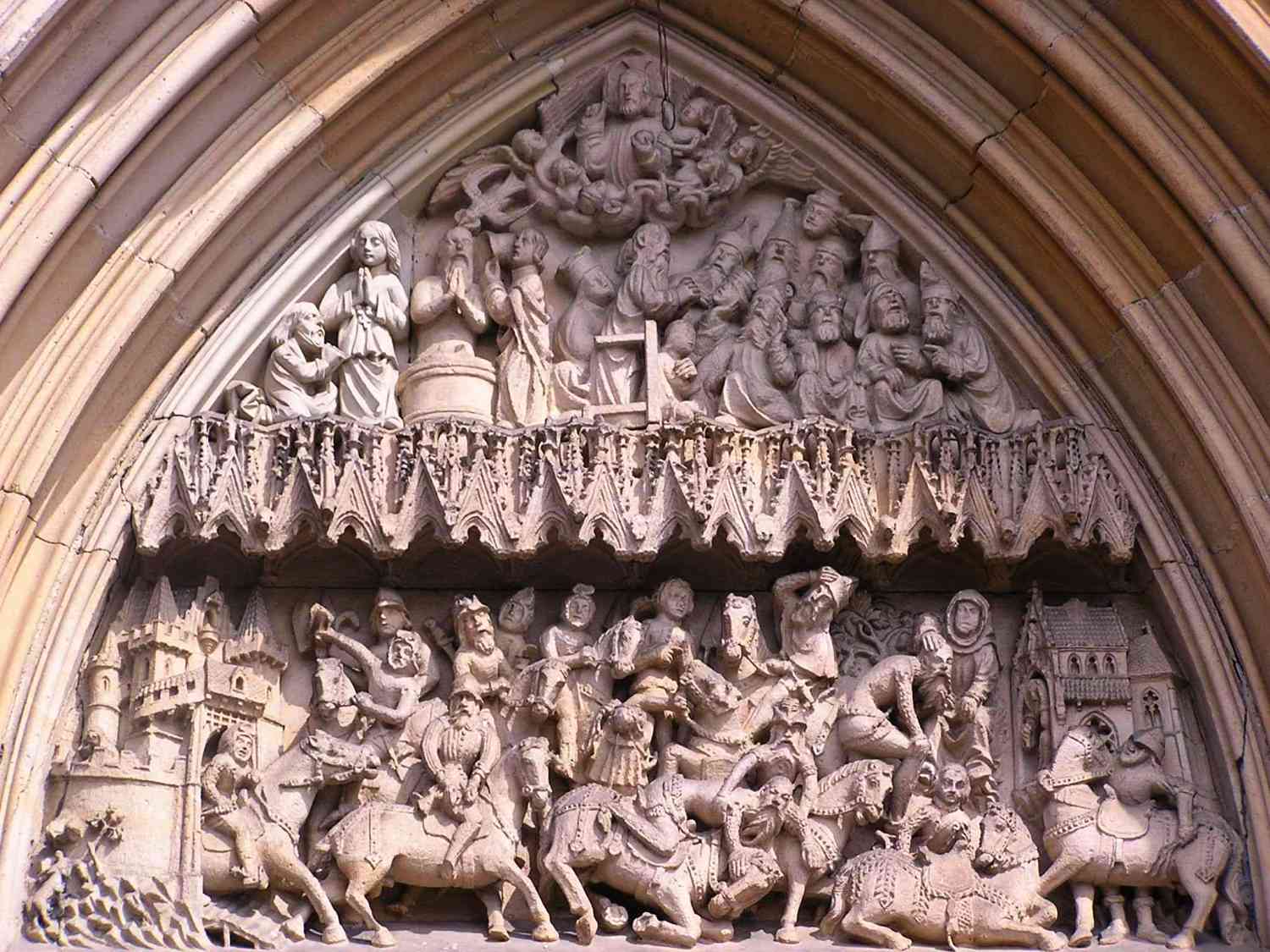|
Hohenfriedberg
The Battle of Hohenfriedberg or Hohenfriedeberg, now Dobromierz, also known as the Battle of Striegau, now Strzegom, was one of Frederick the Great's most admired victories. Frederick's Prussian army decisively defeated an Austrian army under Prince Charles Alexander of Lorraine on 4 June 1745 during the Second Silesian War (part of the War of the Austrian Succession). Background Austria sought to regain Silesia, which had been lost to Prussia in the Battle of Mollwitz. An Austrian army of about 62,500, including allied Saxon troops, marched to Silesia. The commander was Prince Charles Alexander of Lorraine, brother-in-law of Empress Maria Theresa. Johann Adolf II, Duke of Saxe-Weissenfels commanded the Saxons. Frederick had a very low opinion of his counterpart, saying of Prince Charles Alexander that "there will be some stupid mistakes." In fact, Frederick was counting on Charles entering Silesia by crossing the Giant Mountains. If he did, Frederick intended to attack t ... [...More Info...] [...Related Items...] OR: [Wikipedia] [Google] [Baidu] |
Second Silesian War
The Second Silesian War (german: Zweiter Schlesischer Krieg, links=no) was a war between Prussia and Austria that lasted from 1744 to 1745 and confirmed Prussia's control of the region of Silesia (now in south-western Poland). The war was fought mainly in Silesia, Bohemia, and Upper Saxony and formed one theatre of the wider War of the Austrian Succession. It was the second of three Silesian Wars fought between Frederick the Great's Prussia and Maria Theresa's Austria in the mid-18th century, all three of which ended in Prussian control of Silesia. The conflict has been viewed as a continuation of the First Silesian War, which had concluded only two years before. After the Treaty of Berlin ended hostilities between Austria and Prussia in 1742, the Habsburg monarchy's fortunes improved greatly in the continuing War of the Austrian Succession. As Austria expanded its alliances with the 1743 Treaty of Worms, Prussia entered a renewed alliance with Austria's enemies in the Leagu ... [...More Info...] [...Related Items...] OR: [Wikipedia] [Google] [Baidu] |
Frederick The Great
Frederick II (german: Friedrich II.; 24 January 171217 August 1786) was King in Prussia from 1740 until 1772, and King of Prussia from 1772 until his death in 1786. His most significant accomplishments include his military successes in the Silesian wars, his re-organisation of the Prussian Army, the First Partition of Poland, and his patronage of the arts and the Enlightenment. Frederick was the last Hohenzollern monarch titled King in Prussia, declaring himself King of Prussia after annexing Polish Prussia from the Polish–Lithuanian Commonwealth in 1772. Prussia greatly increased its territories and became a major military power in Europe under his rule. He became known as Frederick the Great (german: links=no, Friedrich der Große) and was nicknamed "Old Fritz" (german: links=no, "Der Alte Fritz"). In his youth, Frederick was more interested in music and philosophy than in the art of war, which led to clashes with his authoritarian father, Frederick William I of Prussia. ... [...More Info...] [...Related Items...] OR: [Wikipedia] [Google] [Baidu] |
Battle Of Chotusitz
The Battle of Chotusitz, or Chotusice, sometimes called the Battle of Čáslav, took place on 17 May 1742, in Bohemia, now the Czech Republic; it was part of the 1740 to 1742 First Silesian War, itself a subsidiary of the wider War of the Austrian Succession. Led by Charles of Lorraine, an Imperial force of around 25,000 men was advancing against French-occupied Prague, when it ran into a Prussian army of roughly equal size, commanded by Frederick the Great. Casualties were heavy on both sides, and the battle had little impact on the war in general, but is considered a Prussian victory as they retained possession of the battlefield. The First Silesian War ended with the Treaty of Breslau in June 1742, allowing Austria to recapture Prague in December. Hostilities resumed in 1744 with the outbreak of the Second Silesian War. Background The War of the Austrian Succession was sparked by the death of Charles VI in 1740 and the succession of his daughter Maria Theresa. Salic l ... [...More Info...] [...Related Items...] OR: [Wikipedia] [Google] [Baidu] |
Carl Röchling
Carl Röchling (October 18, 1855 – May 6, 1920) was a German painter and illustrator known for his representation of historical military themes. Life Röchling was born in Saarbrücken, part of the Prussian Rhine Province, son of Friedrich Röchling, a judiciary worker, and Angelika Stoll. He studied from 1875 to 1880 in the Karlsruhe Academy of Arts ''(Kunstschule)'' with Ludwig des Coudres and Ernst Hildebrand and later in the Prussian Academy of Arts. While in Berlin, he was a pupil of the great master painter Anton von Werner, with whom he participated in the creation of various panoramic paintings such as ''Der Schlacht von Sedan'' (" The Battle of Sedan"). Later he became well known for his independent work of historical and military paintings in the turn of the 19th century. He died on May 6, 1920 in Berlin. Works Among Röchling's most famous works of military themes are various depictions of battle scenes of Prussian army victories, especially those dur ... [...More Info...] [...Related Items...] OR: [Wikipedia] [Google] [Baidu] |
Strzegom
Strzegom (german: Striegau) is a town in Świdnica County, Lower Silesian Voivodeship, in south-western Poland. It is the seat of the Gmina Strzegom administrative district (gmina). It lies approximately north-west of Świdnica, and west of the regional capital Wrocław. As of 2019, the town had a population of 16,106. History Middle Ages Traces of settlement on the site during the Roman Empire period have been found. In the Middle Ages it was a fortified settlement under the rule of a castellan, founded in the 10th century, as part of Poland during the Piast dynasty, Piast Poland, first mentioned in a deed issued by Pope Hadrian IV in 1155, confirming the boundaries of the Roman Catholic Archdiocese of Wrocław, Wrocław diocese. Its name is of Polish origin and comes either from the words ''strzec'' ("guard"), ''strzyc głowy'' ("cut hair") or ''trzy góry'' ("three mountains"). As a result of the fragmentation of Poland into smaller duchies, Strzegom became part of the ... [...More Info...] [...Related Items...] OR: [Wikipedia] [Google] [Baidu] |
Siege Of Breslau (1757)
The siege of Breslau was a siege in the Third Silesian War (part of the Seven Years' War) that began on 7 December 1757 and ended on 19 December 1757. After the defeat at Leuthen, the Austrians withdrew into Breslau. The combined Austro-French garrison of approximately 17,000 men, commanded by Lieutenant General Field Marshal Soloman Sprecher von Bernegg, faced a Prussian army commanded by Frederick the Great. Background After over-running Saxony, Frederick next campaigned in Bohemia. Learning that French forces had invaded his ally's territory of Hanover, Frederick moved west. On 5 November 1757, he defeated the combined French and Austrian force at the Battle of Rossbach. The Austrians had managed to retake Silesia: Prince Charles had taken the city of Schweidnitz and moved into lower Silesia. Frederick learned of the fall of Breslau (22 November). He and his men covered in 12 days and, at Liegnitz, joined up with the Prussian troops who had survived the fighting a ... [...More Info...] [...Related Items...] OR: [Wikipedia] [Google] [Baidu] |
Battle Of Leuthen
The Battle of Leuthen was fought on 5 December 1757 and involved Frederick the Great's Prussian Army using maneuver warfare and terrain to rout a larger Austrian force completely, which was commanded by Prince Charles of Lorraine and Count Leopold Joseph von Daun. The victory ensured Prussian control of Silesia during the Third Silesian War, which was part of the Seven Years' War. The battle was fought in the town of Leuthen (now Lutynia, Poland), 10 km (6 mi) northwest of Breslau, (now Wrocław, Poland), in Prussian (formerly Austrian) Silesia. By exploiting the training of his troops and his superior knowledge of the terrain, Frederick created a diversion at one end of the battlefield and moved most of his smaller army behind a series of low hillocks. The surprise attack in oblique order on the unsuspecting Austrian flank baffled Prince Charles, who took several hours to realize that the main action was to his left, not his right. Within seven hours, the Prus ... [...More Info...] [...Related Items...] OR: [Wikipedia] [Google] [Baidu] |
Battle Of Rossbach
The Battle of Rossbach took place on 5November 1757 during the Third Silesian War (1756–1763, part of the Seven Years' War) near the village of Rossbach (Roßbach), in the Electorate of Saxony. It is sometimes called the Battle of, or at, Reichardtswerben, after a different nearby town. In this 90-minute battle, Frederick the Great, king of Prussia, defeated an Allied army composed of French forces augmented by a contingent of the Reichsarmee (Imperial Army) of the Holy Roman Empire. The French and Imperial army included 41,110 men, opposing a considerably smaller Prussian force of 22,000. Despite overwhelming odds, Frederick employed rapid movement, a flanking maneuver and oblique order to achieve complete surprise. The Battle of Rossbach marked a turning point in the Seven Years' War, not only for its stunning Prussian victory, but because France refused to send troops against Prussia again and Britain, noting Prussia's military success, increased its financial support ... [...More Info...] [...Related Items...] OR: [Wikipedia] [Google] [Baidu] |






